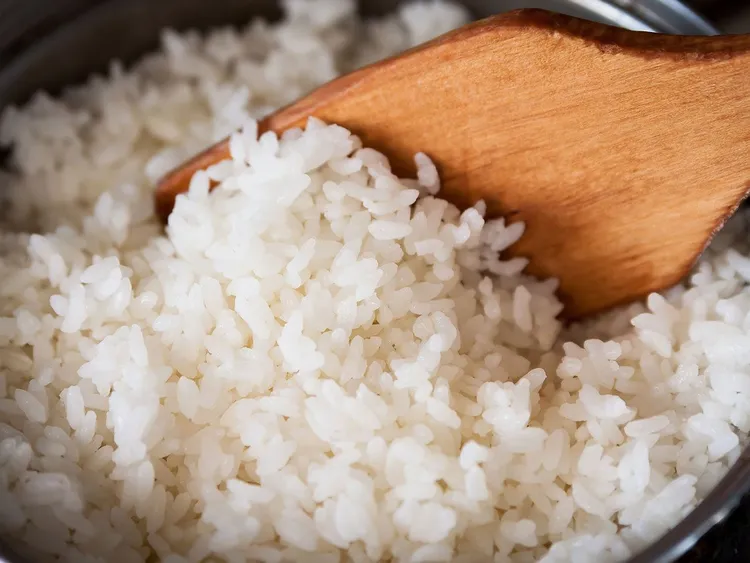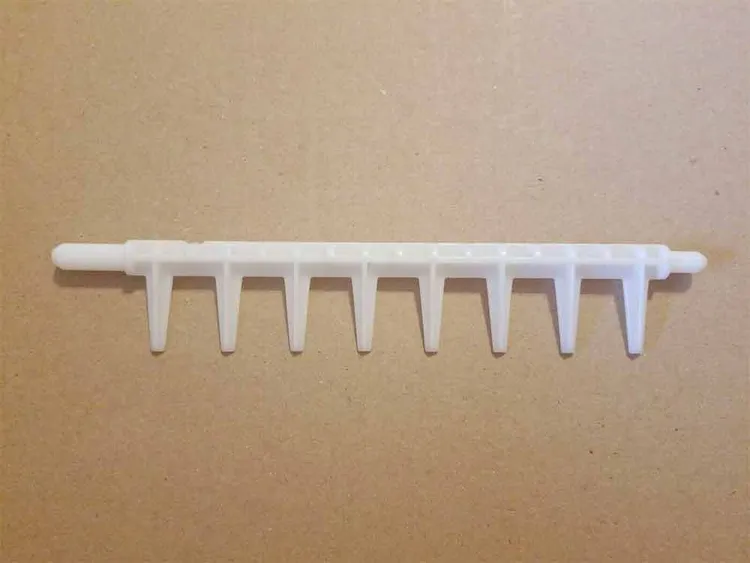Our recommendations are made independently through Research & Testing. We may receive commissions from purchases made via our links.
How to Cut Pomegranate (Without Wasting Any of the Delicious Seeds!)
Cutting a pomegranate to extract all the ruby-red seeds within is easier than you’d think. Here is how to cut pomegranate without wasting a single seed.
If you haven’t figured out how to cut pomegranate properly yet, don’t worry, you’re not alone.
Despite the fruit looking rather unassuming from the outside, it’s a party on the inside. The trouble is, it can be a challenge to cut. Without proper techniques, the seeds and juice within will spill right out and make a mess on the countertop.
Here is all you need to know about cutting pomegranates. We promise that it’s much simpler than it seems!
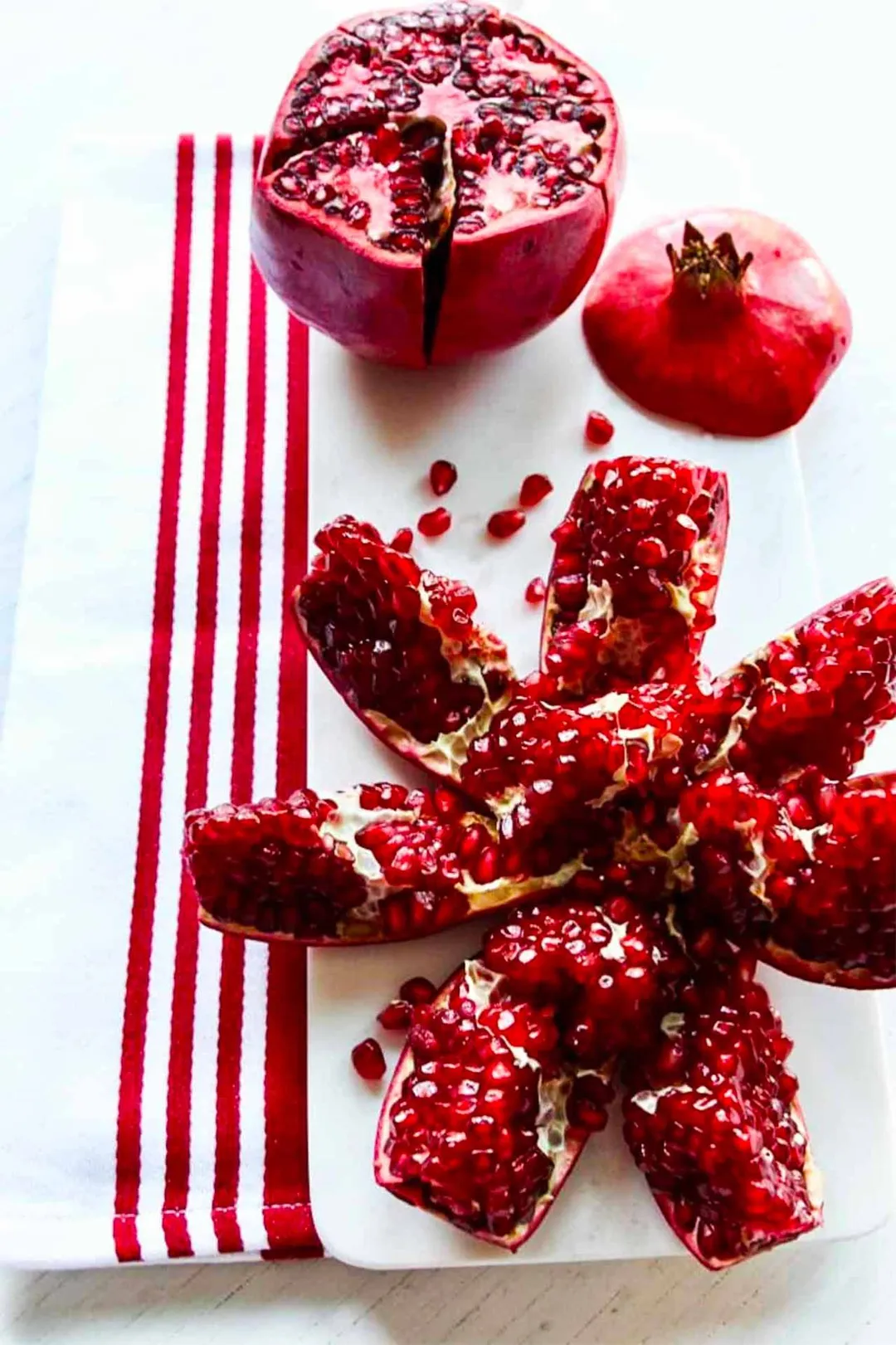
The Best Ways to Cut Open a Pomegranate
There are several methods that you can use to harvest the juicy seeds within. Arguably the best options are the halving method and the ‘flower’ method.
Together with these cutting techniques, we’ll also introduce two deseeding methods that pair up with each one. Respectively, they’re tapping and underwater.
The Halving Cutting Method and Deseeding By Tapping
This style of cutting is the simplest of the two. As you may have guessed, the fruit is cut in two halves. If you’re in a hurry, this is the best choice.
The best de-seeding method to go with this cutting method is tapping.
Step 1: Cut Off the Top
Make a crosswise cut around ¼ inch from the top of the pomegranate to remove the stem section. Slice it cleanly off and discard that piece.
Step 2: Cut Around the Middle and Split Open
Do not cut through the fruit. Instead, sink your blade around ½ inch deep into the centerline of the pomegranate. Then, turn the knife sideways to pry the fruit open.
Dig your fingers into the open cut and slowly split the pomegranate open. The fruit should separate cleanly into two equal halves.
The pomegranate is successfully cut! The rest of the job involves deseeding. However, you can stop here if all you need is a light snack. Keep each half on a plate and pick out the seeds with your hand to eat at your leisure.
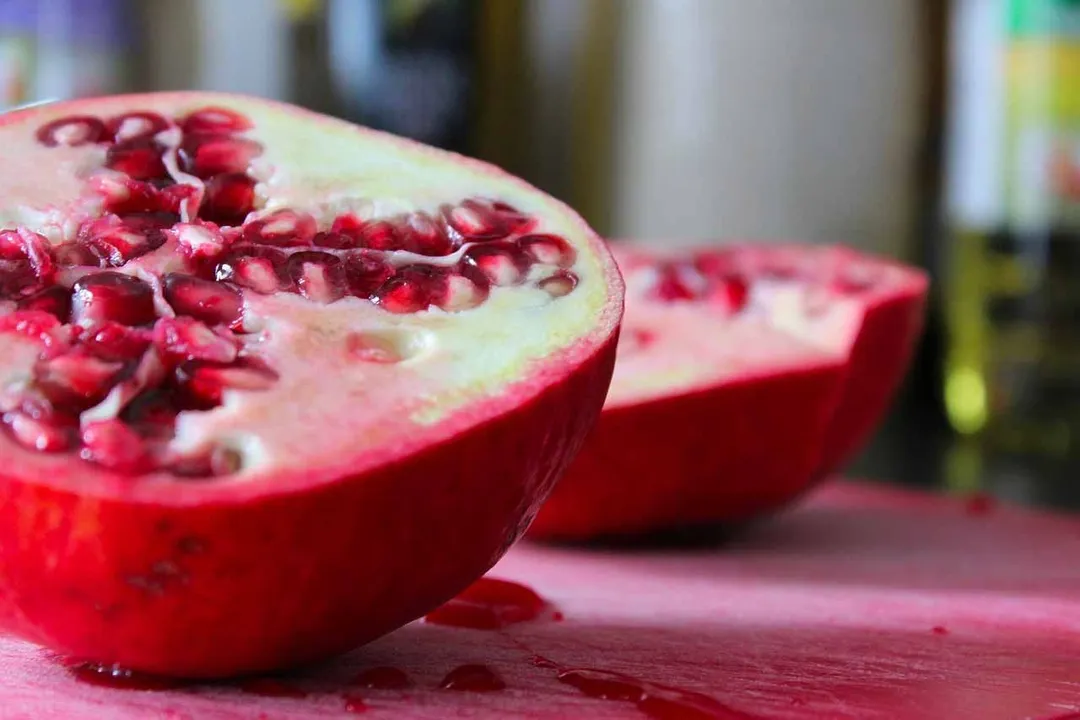
Step 3: Stretch the Skin
If you want to deseed the pomegranate, take out a large bowl and turn the fruit upside down.
Dig your fingers into the sides of the pomegranate and stretch it open.
By loosening the pith, the seeds should be easier to remove. As a matter of fact, when you stretch the fruit, some of the seeds will already begin to fall.
Step 4: Tap the Fruit With a Spoon
Use a spoon and tap the back of the fruit to force the seeds to come out. With each tap, the seeds will start falling into the bowl underneath.

If some of the seeds are still stuck, squeeze the half lightly then stretch it again like in step 3. Tap it again until the majority of the seeds have fallen off. Sweep up any remaining seeds by hand.
Pick out any fibrous white membrane that fell into the bowl.
Repeat the process with the other half of the pomegranate until all of the seeds are in the bowl.
The ‘Flower’ Cutting Method and Underwater Deseeding
Step 1: Cut Off the Top
Stand the pomegranate upright on your chopping board and keep it still with one hand. Then, with your other hand, use a paring knife to carve off a small section of the fruit’s top.
Cut at an angle so that the removed piece has a cone shape. Ensure that the cut is shallow. You don’t want the tip of the blade to sink far enough through the pith that it slices the seeds inside.
Step 2: Carve Out the Sides
Inspect the sides of your pomegranate. You will notice that the fruit will be slightly square-ish and has a few ridges running down the sides. These ridges are really important and will serve as the guiding lines for the next step.
With your paring knife, cut a line from the top (the part you just cut out), and follow the ridge all the way down. Stop at the bottom end.
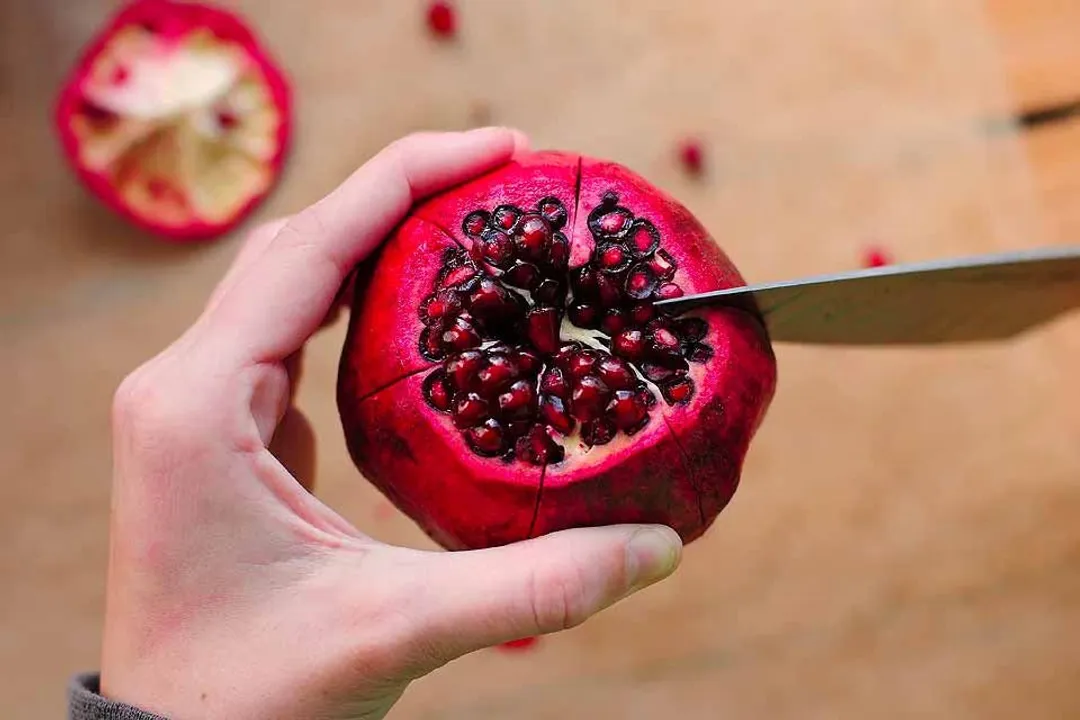
Control the cutting depth carefully. You want the cut to be deep enough that it punctures the red outer skin and through the majority of the white pith. However, you don’t want it to be so deep that it punctures the juicy seed pods inside.
Each pomegranate will have a different number of ridges. Repeat the process with all the other ridges.
Step 3: Pop the Fruit Open
Once all the ridges are cut, you will notice that all the cuts you just made have separated the fruit into roughly equal segments.
Place your thumbs in the small recess that you carved out from the top of the fruit. Then, apply force firmly to pull the segments apart. They will tear off along the lines you just carved and should separate cleanly.
Do this with all of the segments until the fruit is completely opened and the ruby seeds are exposed. The end result should look like a bloomed flower.
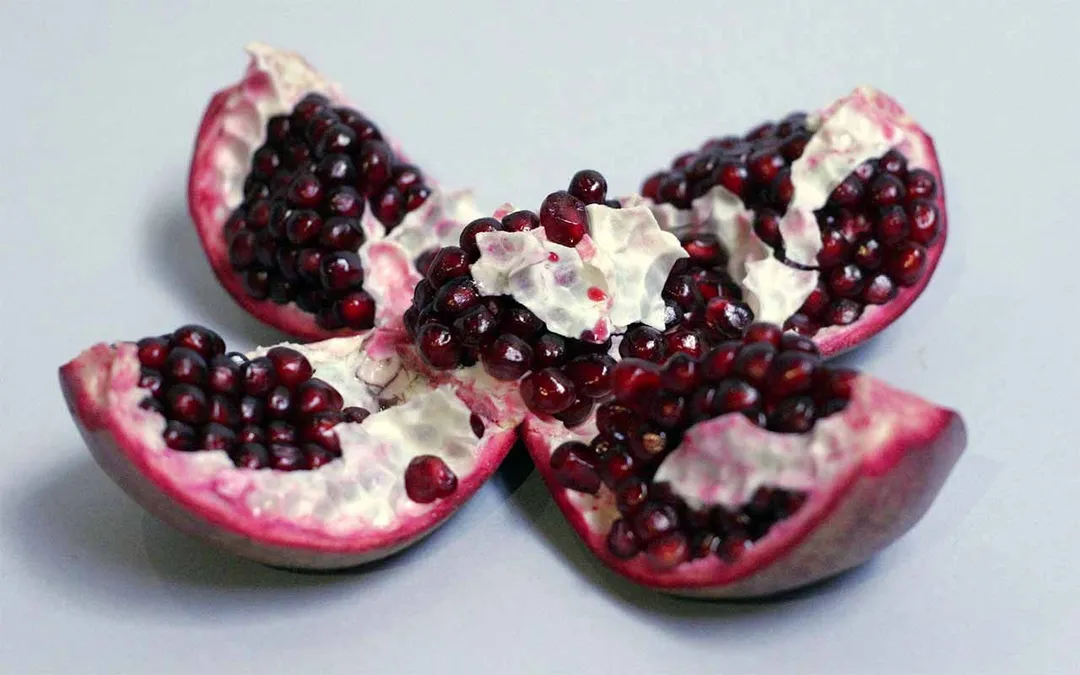
And that’s it! You just cut open your first pomegranate. The result is really aesthetically-pleasing, so you can just serve up the ‘flower’ on a plate to guests. You may use a spoon to scoop all of the seeds out. Or, if you’re not feeling very motivated and just want a snack, pick off the seeds with your fingers and eat.
Proceed further if you want to deseed the pomegranate completely.
Step 4: Prepare a Large Bowl of Water
Take out a bowl large enough to hold the fully-carved ‘pomegranate flower.’ Fill it with clean tap water.
Step 5: Submerge the Pomegranate
Lower the opened pomegranate into the water. Then, with your fingers, brush the seeds from the fruit. When the seeds are loosened, they will sink to the bottom. The fibrous, white membranes will rise to the top.
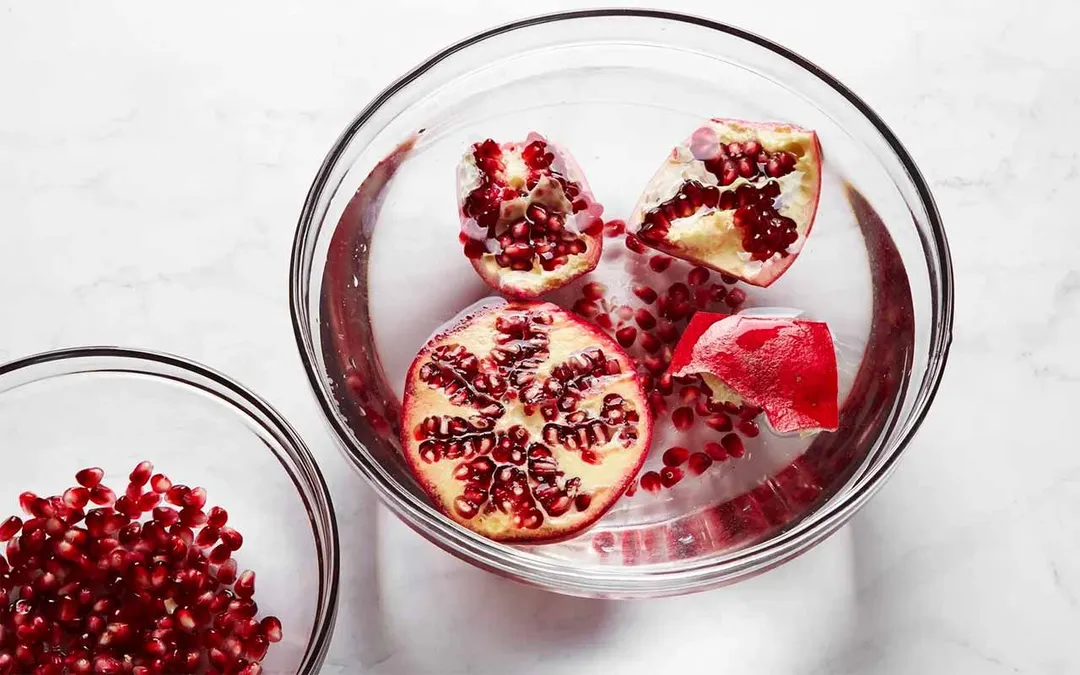
Once that’s done, just skim off the white membranes and drain the water. You will have a bowl full of luscious-looking seeds!
How to Pick a Ripe Pomegranate
Picking a ripe pomegranate can be an irritating process because it almost feels random. Even if you know exactly what to look for, you don’t really know what you’ve got until you crack the fruit open.
If you got a ripe pomegranate, the seeds within will be ruby red in color and very sweet with a slight tang. However, if you accidentally picked up an unripe one, the seeds inside may range in color from light green to white. The taste won’t be very good, either. Instead of sweet and juicy, unripe seeds taste sour and bitter.
It is not harmful to eat an unripe pomegranate. As a matter of fact, there may even be some health benefits. It has been found that while ripe pomegranate has a very high total phenolic content (TPC), unripe pomegranate has a lot more antioxidants.
However, since most people purchase pomegranates for their signature taste and coloring, an unripe pomegranate is more of an annoyance than a blessing. Therefore, look out for the following signs while you’re out buying your fruits.
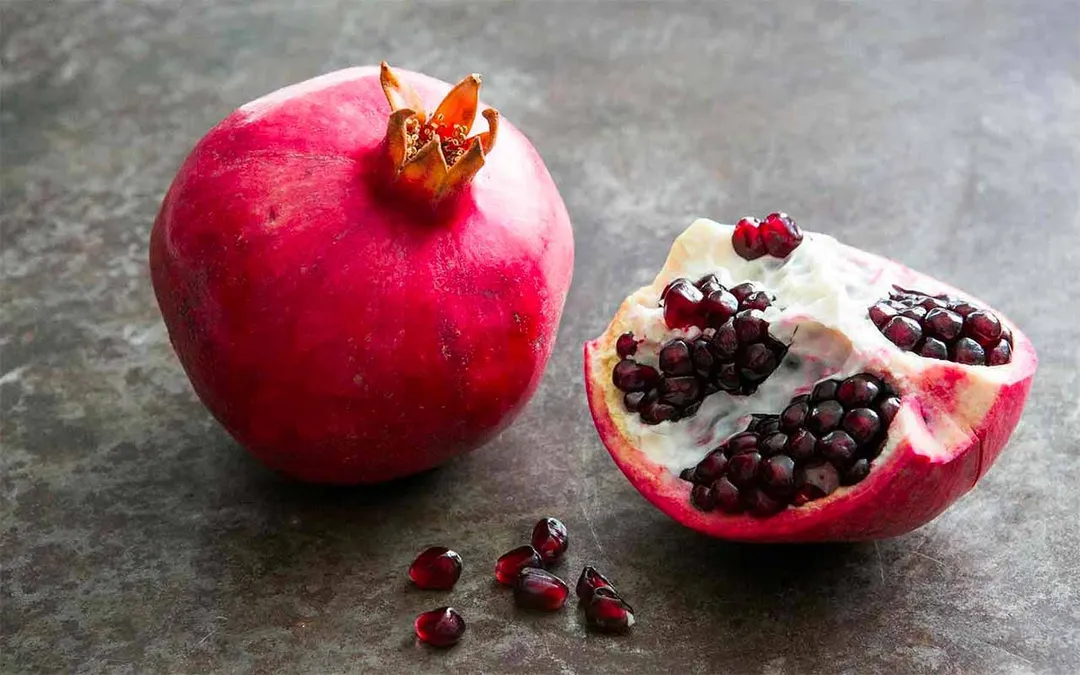
Shape
A good pomegranate should not be perfectly round. The best ones will typically have slightly flattened sides.
This is because when the fruit starts to ripen, each seed and its covering (called arils) will swell up. They push out on the sides of the fruit, making the shape develop corners. The stem and bottom will become flatter, too.
Texture
When the fruit hasn’t ripened yet, its skin will be smooth and tough. Once ripened, the skin will soften and take on a leathery quality. It is easier to scratch, too, so try lightly scraping the outer skin of the pomegranate with your nail. If abrasion marks appear immediately, the fruit’s ready to be eaten.
But you typically don’t really need to resort to such drastic methods. The fruit naturally swells outwards as it ripens, so the skin will also crack open in response. Check for these cracks (called splitting) and you can easily tell visually which one’s ripe and which one isn’t.
Can You Tell Whether a Pomegranate Has Ripened By Color?
Although it is possible to pick a pomegranate by color, it is not a dependable signal. A few cultivars will have green spots on their skins when they’re still unripe. However, in many other cultivars, the color of the fruit will range from light pink to deep red without any hint of green.
Therefore, it’s best that you don’t base your decision entirely on the coloration of the pomegranate.
Conclusion
Pomegranate seeds don’t just look great, but they also taste amazing. Now that you have learned all that there is to know about how to cut pomegranate, test it out in your kitchen!
Tell us how it went in the comment section below.
Authors
Luna Regina is an accomplished writer and author who dedicates her career to empowering home cooks and making cooking effortless for everyone. She is the founder of HealthyKitchen101.com and HealthyRecipes101.com, where she works with her team to develop easy, nutritious recipes and help aspiring cooks choose the right kitchen appliances.

